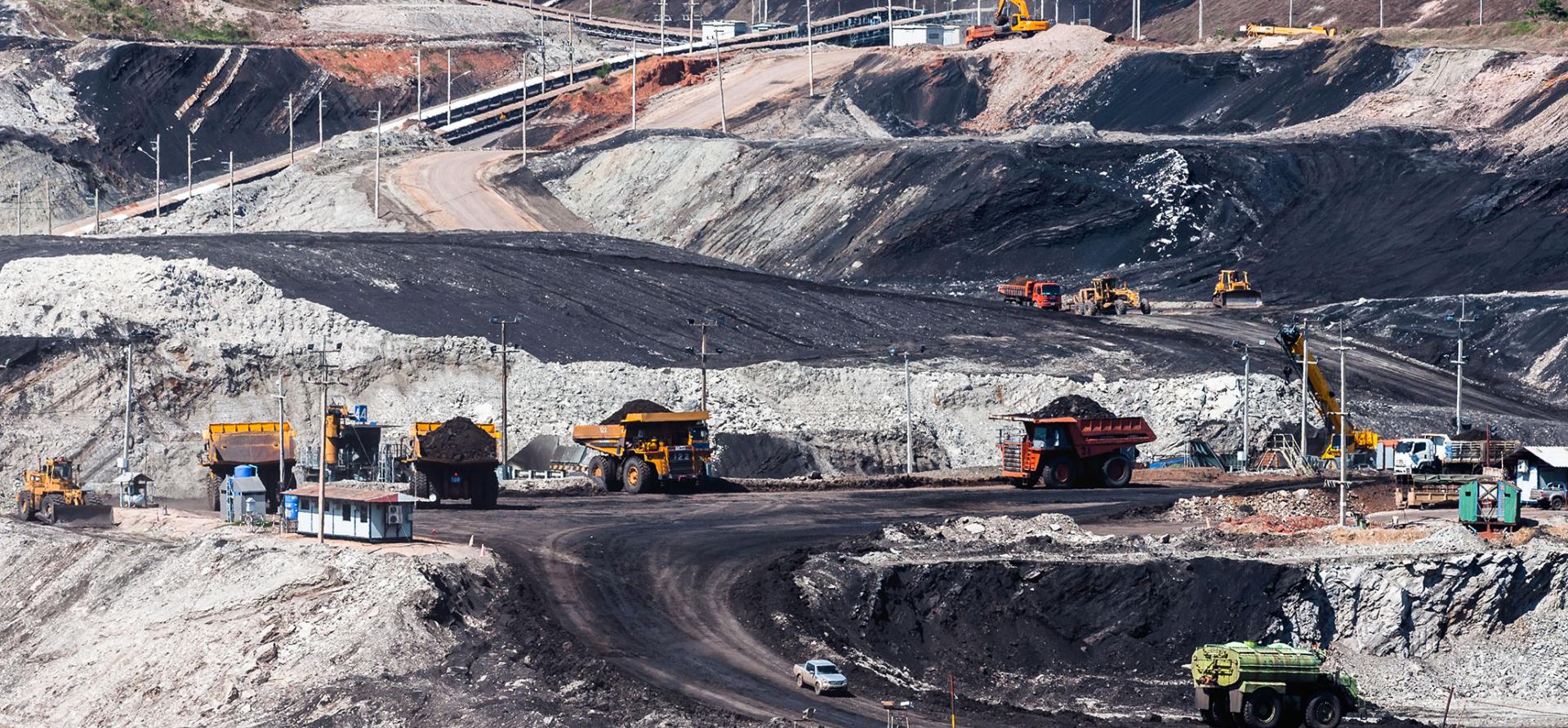
Key Findings
Financing measures for Whitehaven Coal’s acquisition of the Daunia and Blackwater mines demonstrate that traditional lending mechanisms are becoming more restrictive for metallurgical coal projects in addition to thermal coal projects.
As banks increasingly pivot away from all forms of coal in favour of renewables and related commodities, a greater proportion of funding for coal mine acquisitions and expansions in Australia are being financed by private debt, leading to higher costs of financing
The growth in private debt to finance coal mine acquisition means Australian banks’ influence on coal mining operations and disclosures may become more limited
Whitehaven Coal is acquiring 100% of the Daunia and Blackwater metallurgical coal mines from BMA for an aggregate cash consideration of US$3.2 billion.
That sum comprises an upfront consideration of US$2.1 billion, and a deferred consideration of US$1.1 billion. Additionally, Whitehaven will need to pay US$900 million in contingent payments over the course of three years after the acquisition is finalised. This will be Whitehaven’s largest acquisition to date, funded via a combination of available cash, a bridge facility, vendor finance, and cashflow from its business activities over FY2025, FY2026 and FY2027.
The upfront consideration of US$2.1 billion is payable on completion of the acquisition, which is expected to be in the June quarter of 2024. Part of this will be funded by Whitehaven’s balance sheet. Whitehaven’s net cash balance at the end of June 2023 was A$2.65 billion, and at the end of September 2023 was A$2.45 billion. The remainder is being funded by a US$900 million bridge facility that Whitehaven has secured with Bank of America and Jefferies, which will expire on 30 June 2024. The cost of the bridge loan hasn’t been disclosed, but Whitehaven CEO Paul Flynn has asserted the interest rate for the loan would be set by the banks standard process plus a margin of between 3% and 5%.
During the period the bridge loan is in place, Whitehaven is restricted from paying dividends out of its earnings, and its share buyback program will remain on hold. Prior to the Daunia and Blackwater acquisition, Whitehaven was in the process of a large share buyback program, paying out A$948.9 million to buy back shares until it announced a temporary suspension on share buy-backs in August 2023. Now the cash that was assigned for the share buyback is being used for the upfront cash consideration for the Daunia and Blackwater mines.
Whitehaven needs to replace the US$900 million bridge facility with a longer-term funding arrangement before 30 June 2024. It remains unclear where it will source this from, but it is unlikely to obtain it from Australian financial institutions.
With traditional lending methods becoming more difficult to access, Whitehaven has said it is considering selling a minority stake in Daunia and Blackwater to global steel producers to help fund the transaction.
Lending from Australian banks for all coal mine types is becoming more restrictive
While the majority of Australian banks’ lending policies are yet to include restrictions on metallurgical coal mines, mining companies are facing greater difficulties obtaining project finance for both thermal and metallurgical coal mines.
Commonwealth Bank (CBA) now requires existing clients that derive 15% or more of their revenue from sales of metallurgical coal, or that generate 25% or more of their electricity from coal, to complete an assessment of the environmental, social and economic impacts before they can access corporate or trade finance or bond facilitation. From 2025 these clients will have to have published transition plans that encompass Scope 1, 2 and 3 emissions. This is the first time the bank has specified that Scope 3 emissions must be covered. This would impact on Whitehaven’s access to finance from CBA, as the acquisition of Daunia and Blackwater is set to increase the share of total revenue from metallurgical coal sales to greater than 15%, and Whitehaven currently has no focus on Scope 3 emissions.
Whitehaven previously struggled acquiring finance from Australian banks after failing to refinance its A$1billion loan from NAB and Westpac this year to fund its Vickery, Winchester South and Narrabri mine developments. The banks initially provided the A$1 billion loan facility for the company’s newest and largest coal mine, Maules Creek in NSW’s Gunnedah Basin, an open-cut project that started operating in 2015 and has enough reserves for 40 years of production. The financial requirements of the Daunia and Blackwater acquisition also raise questions over Whitehaven’s capital allocation for its proposed expansions at its Narrabri, Vickery Werris Creek and Maules Creek mines, and its proposed greenfield project Winchester South.
Whitehaven’s chief financial officer Kevin Ball stated earlier this year: “It is increasingly difficult being a coal producer to attract external funding.” He added that Whitehaven was instead focused on sourcing loans from the US debt capital markets.
In its September 2023 Resources and Energy Quarterly, the Australian government asserted there was ongoing risk in investing in all coal types: “Metallurgical and thermal coal producers face growing constraints on availability of finance. Banks have increasingly sought to pivot away from all forms of coal in favour of renewables and related commodities. Hopes among some producers that metallurgical coal would be unaffected have not been entirely borne out. This is likely to place some further constraint on metallurgical coal investment over coming years.”
Australian banks’ lending decisions spill over into lending decisions by offshore banks
Difficulty obtaining financing or guarantees from Australian banks is pushing coal mining operators to search further afield. As noted by both Whitehaven and Yancoal in submissions to the Joint Standing Committee on Trade and Investment Growth, the lending policies implemented by Australian banks have repercussions for international borrowing availability and costs. Whitehaven stated: “In general, international banks will not lend in volumes greater than the largest Australian bank in our [Whitehaven’s] syndicate. Hence when Australian banks reduce exposure to coal, or exit altogether, this puts further pressure on the international banks as well.”
This means coal mining operators will have to move to higher-cost and higher-risk debt sources.
Additionally, Yancoal mentioned the impact of Australian banks’ coal lending policies on its ongoing total costs: “The policies of domestic lenders have both direct and consequential impacts to our continued operations… The reluctance of a growing percentage of the domestic finance industry to work with the sector is being noticed internationally, further driving up the cost of financing our continued operations.”
This reduced lending pool drives up the cost of obtaining financial services from those that remain in the market.
Private debt is emerging as a popular, albeit higher-cost funding tool for mine acquisitions
EY’s recently published analysis on business risks and opportunities for Australia’s mining and metals sector found that access to capital rose to be the second biggest challenge reported by companies in 2023. Analysis by the Australian Investment Council and Preqin in 2023 found that Australia’s emerging private debt industry grew steadily in 2022, supported by robust deal activity and tighter lending conditions amongst traditional debt providers.
Booming cross border merger & acquisition (M&A) activity in Australia’s mining sector through Q1 2023 demonstrated that the appetite from overseas private financiers remains strong. While globally M&A activity slowed in Q1 2023, deals involving an Australia target rose to their highest volume since Q4 2021.
Stanmore Resources utilised private debt to partially fund its acquisition of BHP’s 80% stake in two mines in 2021. Additionally, Chinese companies own more than 50% of ASX-listed Yancoal, Washington H Soul Pattinson owns almost 40% of ASX-listed New Hope, and Czech-based Sev.en Global Investments now controls 51% of ASX-listed Coronado Global Resources.
A heavier reliance on international private debt mean higher borrowing costs are likely for Australian coal mining operators.
Growth in alternative forms of funding erodes Australian banks’ influence on coal mining operations and disclosures
The upside of Australian coal mining operators sourcing project finance from Australian banks is that there are more policy tools at those banks’ disposals to influence environmental, social and governance (ESG) and emissions reporting requirements by making changes to their customer policies. As more mining companies source funding from private debt markets, they also obtain greater freedom from reporting requirements and from reductions in their share of revenue from fossil fuel-generating activities that financial institutions are increasingly making mandatory.
The rise in private debt can decrease transparency in ESG issues and data disclosure in the absence of monitored, standardised disclosure practices. This means that the main instruments left available to influence mines’ reporting requirements, emissions reductions and closures lay with federal and state government policy, approvals and regulations, and to some extent with the Foreign Investment Review Board.
It is crucial, amid these shifting financing trends, that Australian banks ensure they don’t weaken lending standards in a bid to compete with non-bank lenders, and maintain their net zero commitments. Meanwhile, the rise in private debt financing ` that more attention should be paid to integrating ESG factors and reporting frameworks into private debt transactions.















